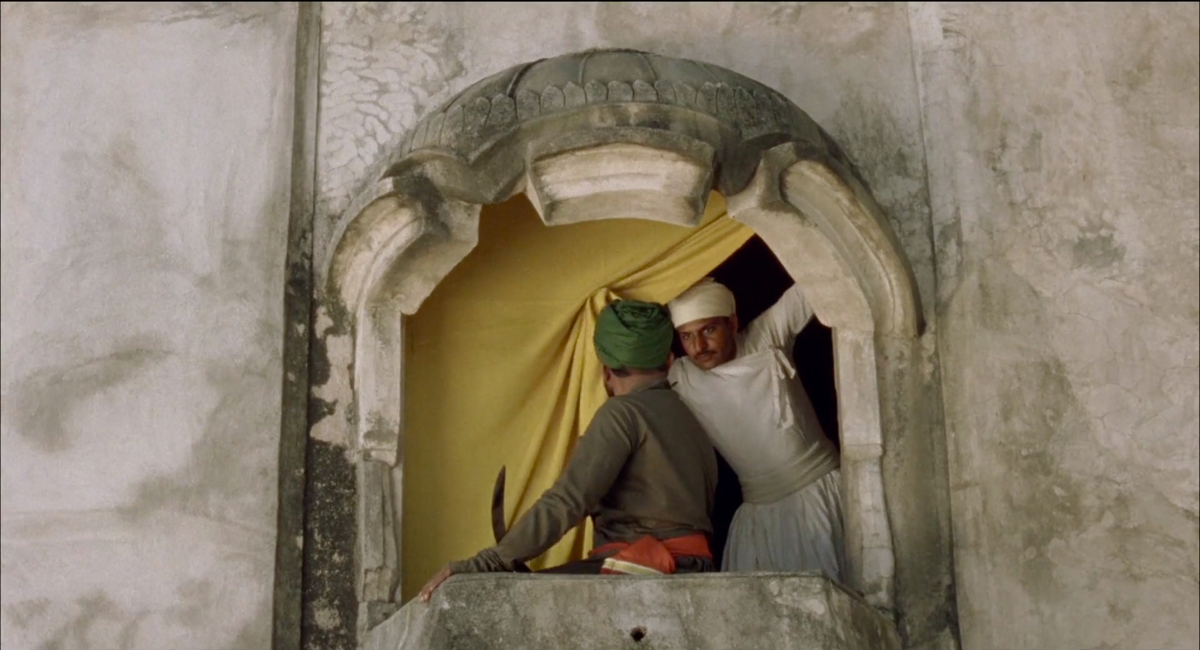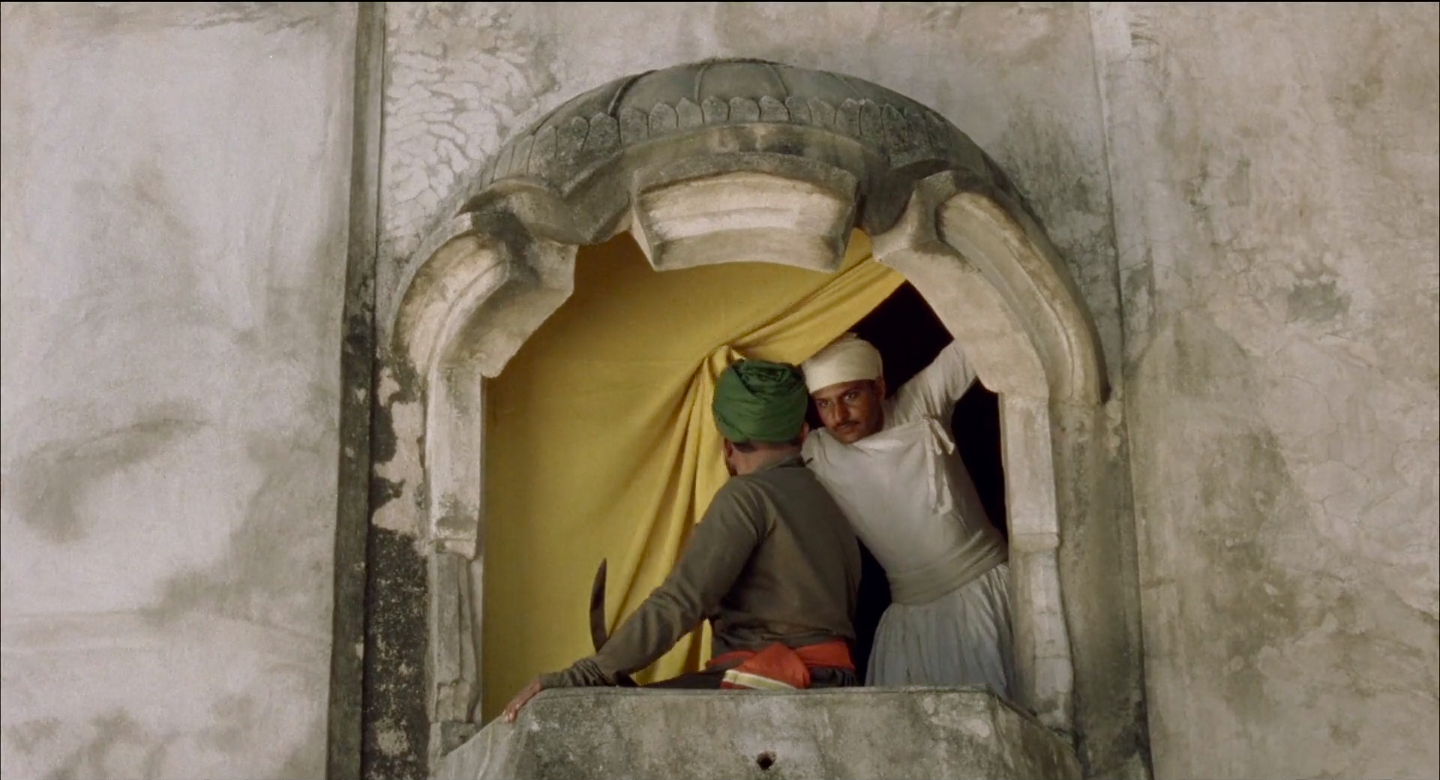The Films of Amit Dutta: Week #1
Scenes from a Sketchbook
Amit Dutta
2016
21 Minutes
Artist Cinemas
Date
Repeating April 18–19
Scenes from a Sketchbook is based on and inspired by the tinted brush drawings, sketches, and some finished yet minimalistic works of the eighteenth-century master miniature painter Nainsukh. Even in some of his finished paintings, the artist did not hide his corrections and aforethoughts, which he allowed to show through a mostly untouched stark page. This film attempts to do the same.
Scenes from a Sketchbook is the first installment of The Films of Amit Dutta, a selection of films programmed by Iman Issa as the tenth cycle of Artist Cinemas, a long-term, online series of film programs curated by artists for e-flux Video & Film.
The Films of Amit Dutta runs in six weekly episodes from March 7 through April 18, 2022, and features six films by Amit Dutta accompanied by a conversation in six parts between Amit Dutta and Iman Issa, published in text form. A new film and part of the conversation are released every Monday. Each film streams for the duration of one week.
Amit Dutta in Conversation with Iman Issa
Part I
[Read parts one through six here: I, II, III, IV, V, VI]
Iman:
I first saw your films when a collection of them was shown on MUBI in 2020. I remember I watched Scenes from a Sketchbook (2016) first and was completely mesmerized, and for the following days and weeks was watching your films every night till I finished all the ones that were available and started repeating them. The process lasted till they were taken off the site. The most striking feature for me was how the material you showed was organized. It was clear that narrative was not a guiding principle or at least not the central one, and that there was a strong sense of rhythm but one that was not easily decipherable. As soon as I would think I knew what was coming in terms of an image or a sound. or would feel a sequence sinking into a familiar trope aesthetically or emotionally, your next move would immediately throw me off balance. There would be a cut, a sound, or some other intervention that would completely shift the logic. There was also something sharp, humorous, maybe even mischievous in how any familiar trope was interrupted or overturned. As a viewer it keeps you on your feet, your mind constantly working, trying to assemble the material, to make sense of what is seen and heard and how it all relates. It is an immensely engaging and pleasurable experience. Can you speak more about how you go about making these decisions and organizing the material at hand?
Amit:
You describe your viewing process beautifully. I consider myself lucky that you switched your computer on at that very moment, far away in Berlin, and came across my work. It’s said that an artwork should be left incomplete so that an ideal viewer completes it with their intelligence and wisdom. That is what you have done. You have completed my flawed works with your wisdom. Now that you describe my films in these words, I find myself rethinking them. Mostly when I make them, I am in a kind of trance. I make decisions quickly and intuitively. I don’t know if you play chess. Online, there is a one-minute version, it’s called “lightning.” To play this version, you first have to practice and internalize the chess patterns, and then when you play, sometimes up to sixty moves in one minute, it’s your muscle memory that matters. When I make films, it’s somewhat similar. I read a lot about the subject and think about it day and night, internalizing the rhythm, the flow of ideas and attention. But when I shoot, edit, or design the sound it’s super-quick. I make films at a frenetic pace. This pace is my form.
One more aesthetic idea that has resonated with me since my student days also syncs with this question. There is an old aesthetic mode in Indian poetry called Vakrokti—it has entire treatises devoted to it. Literally, it means “twisted/meandering mode,” where the aim is to use some indirect way of communicating an idea that shall actually create a stunning effect that is greater than the idea by itself. It is a way where craft can actually create the epiphany, because sometimes sheer ideas can be overly sentimental.
Iman:
Yes, I have read about you being an avid chess player. That is interesting what you mention regarding Vakrokti. Usually when I’m working I’m always trying to take the most straightforward route to my subject matter, which inevitably ends up being quite twisted. But you aim for the twisted route right from the start?
Amit:
To put this in perspective, first let me go back to the chess metaphor. When I was young, my aim was to become a chess player. But there were no books or ways to improve one’s game where I was growing up. My interest in chess did not end there despite many disruptions, but more interests were added—music, literature, and cinema. The intrigue with the game remained, and is still there. The complexity of the game fascinates me. While studying at the film institute, I even wrote a small essay about the idea of time in chess, cinema, and paintings. These days I mostly play correspondence chess, where you make one move every ten days; but then you are playing thirty to forty games at a particular time. Each game may take two years to end. But at the end of the two years you have played forty to fifty high-quality games. Similarly, while making films or writing a book I am doing a lot of things at the same time, but slowly each of them emerges with individuality. The ideas are formed at such a slow pace that it’s difficult to say where they come from, how they originate. And when I happen to complete a number of films or books in a particular year, it comes across as being very prolific though the process is actually very slow.
Now to come back to your question—whether I aim for the twisted route from the start. I believe that even within a single idea, the scaling of time can be a very interesting ploy. A very straightforward idea can sometimes be bereft of mystery at the outset, when I am only trying to understand the material at hand. Sometimes it is the other way around, the material at hand provides some impression of definite comprehension. But the comprehension needs to recede for something more magical and more expansive to come to the fore. The quest is to explore an idea purely, like improvising on a raga or musical scale. Time can bring about that alchemy. Because even when human articulation is necessarily linear, human comprehension need not be linear. The order in which I can rearrange and present ideas creates different experiences of the same material. This possibility is very thrilling. For instance, if I say apple the meaning is consensually clear, but when I sufficiently space out the articulation of a-p-p-l-e over time or space the sounds become pure syllables: Do I still intend to say apple? Does my intention acquire a different power, or does it get dissipated? I have also sensed this in your work, where you arrange the artwork in various settings, changing the context, changing the experience of the works totally.
I give you an example by describing a scene from Nainsukh (2010):
At first glance, Nainsukh’s painting Balwant Singh About to Smite a Tiger evokes a heroic sentiment. The Raja’s sword is held aloft above his head, just before the lethal blow is to be delivered to the tiger’s scalp. The tiger has enclosed its jaws around the head of a man it is clasping with its enormous claws. A frightened group is extending arms from behind shields at a safe distance from the mauling beast. The drama is palpable, and the immediacy is increased by labeled inscriptions of the names of the participants, which lend the picture an air of historic authenticity. Yet, if one new bit of information became available to the viewer, this painting may no longer necessarily represent what it seems to. For the art historian familiar with the similar and earlier Mughal painting of Prince Khurram slaying the tiger (flanked by his father Emperor Jahangir and courtiers, and based on a real incident from the Padshahnama), Nainsukh’s painting may convey a completely different aspect of Balwant’s life, and so the heroic sentiment depicted by the painter will take on a different flavor too. The painter, inspired by the earlier Mughal painting, could well have staged the event to eulogize his patron, and the whole forest scene could simply be proof of the painter’s skill at bringing to life an imaginary event with such throbbing dynamism. Cases of an exemplary incident entering the realm of legend, template, and ultimately even of symbolic significance are not uncommon in traditional art, where grasping the essential modes and learning to improvise within that genre are of the utmost value in an artist’s practice. Time within this painting, then, not only becomes a pun but also affects the rasa of the viewer as it develops with each layer of association.
[Read parts one through six here: I, II, III, IV, V, VI]
-
For more information, contact program@e-flux.com.

